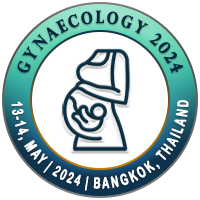
Gisele V Gonzales Acantilado
Mariano Marcos Memorial Hospital and Medical Center, PhilippinesTitle: Best practices of the Women and Child Protection Unit during the COVID 19 pandemic: Women and Child Protection Unit Mariano Marcos Memorial Hospital and Medical Center
Abstract
Introduction: Violence affects millions of women and children around the world. This range to all forms of violence—including sexual violence and domestic violence. Nearly 1 in 5 girls is sexually abused at least once in her life. More than 570 million women are estimated to be subject to gender-based violence annually. To address this, in the year 1997 Establishment of a Women and Children Protection Unit in All Department of Health (DOH) Hospitals was promulgated in response to the increasing number of women and children who consult due to violence, rape, incest, and other related cases.
Aim: The unit aims to provide medical intervention, legal assistance, evaluation of safety and facilitate recovery from trauma and stigmatization to violence against women and children survivors. It also aims to follow up and track the women and children victims to ensure their continued safety and well-being. It aims to provide a safe haven for abused women and children equipped with competent, compassionate, non-threatening medical and psychosocial staff and a welcoming and safe space. The unit is oriented towards capability building of its hospital staff through continuous education, delivering advocacy programs to the community through face to face activities and online platform and networking with related stakeholders. The unit aims to be dynamic paving way to innovations to be able to continue its services during the COVID 19 pandemic.
Best Practices: Upon the declaration of the pandemic in 2020, the unit remained open catering to all women and children victims. COVID 19 protocols of the institution were followed when interviewing, examining and counselling its clients. Lockdowns were mandated by the government to control the spread of the COVID-19 virus. To adapt to this change, physicians in the unit testified in court as expert witnesses using video conferencing. Follow up of women and children victims via call, text messaging or video call were done in lieu of home visitation. Coordination and collaboration with Women’s Desk local social workers, municipal social workers and development sectors were also done via text message and or phone calls. To address the increasing reports of violence against women and girls, particularly domestic violence, an advocacy campaign on violence against women and the laws governing it was aired via live stream using the hospital’s Facebook page.
Results: The unit had attended to a total of 398 clients from 2020 from up to the present. 65 among which were abused physically while 333 were abused sexually. At present, the unit still follows up its clients via call, text messaging or video call was done in lieu of home visitation. It has 51 clients being followed up from December 2021 up to the present. The first advocacy campaign of the unit that was aired via live stream was entitled “I vow to end VAW (Violence Against Women).” With the lowering number of COVID 19 cases and subsequent easing of COVID 19 protocols at the latter part of 2022, face to face advocacy projects were resumed. A film showing was conducted among Junior high school students of a National High School with the aim of increasing awareness on Gender Based Violence. This was attended by 925 students.
Conclusion: Violence against women increased to record levels around the world following lockdowns during the COVID 19 pandemic. The United Nations called the situation a “shadow pandemic.” With the cooperation and hard work of the members of the unit, its services were continuously made available even amidst the pandemic. Teleconsultation had overcome the challenge of lockdown in following up our clients. Live stream advocacy campaign helped us reach a larger crowd of viewers. The penetration of a younger crowd for advocacy programs on Gender based violence helps build a foundation in knowing that gender-based violence and abuse takes different forms and has negative consequences. They can then apply this understanding to practical responses to help address environments where gender-based violence and abuse occur. Lastly, in a constantly changing world, adaptation and innovation are musts to overcome hurdles just as what our unit has done during the pandemic.
Biography
WILL BE UPDATED SOON

